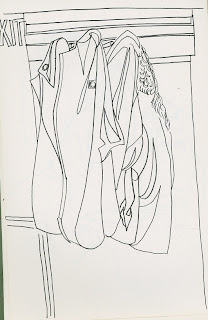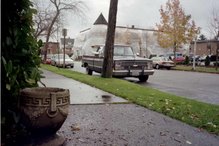Maple Bars
at Raitt Cafeteria, Autumn, 1968: There was a part we played, unknowing, in the
structuring of a future in doughnuts. (For National Doughnut Day)
315 ADVANCED FOOD SELECTION AND PREPARATION (3 or
5) AWSp Nielsen
Scientific
principles and experimental method applied to food preparation and
preservation. Management related to food
purchasing, meal preparation, and service.
Prerequisites, 110 and permission, or 216, and organic chemistry.
372 INSTITUTIONAL FOOD PREPARATION
(5)
WSp Ziglar Laboratory and institution practice in
large-quantity food preparation and cost control, Prerequisite, 315 or permission.
When you
consider the difficulty of point of view you find an understood from plane
geometry - if there is one point, there must be another. It can be important to understand in more
than one way – not to judge quickly but to be patient, and to deepen your
awareness by gathering detailed information.
At the University
of Washington University
of Washington Bulletin

The art
building had its own coffee shop, a dark room off one hallway in the
building. It looked psychedlic and
plastic.
Perhaps
someone there said they were not open, but there was - the Raitt
Cafeteria. The Raitt Cafeteria was
geographically related, across a gray and green campus pathway and down a gray
stair with smooth dark walls - the Raitt Cafeteria.
It may have
been a myth that the cafeteria was a part of the Home Economics
Department.
 But the
maple bars there were perfect, decorated with very thick icing, thicker than
other maple bars. The maple bars were no
myth.
But the
maple bars there were perfect, decorated with very thick icing, thicker than
other maple bars. The maple bars were no
myth.
Boomer
students were structuring the future of doughnuts. Practice brought this other Department
forward. These were languages - in a
way, how to realize it - food was a language from another Department.

I turned
this poem in – it is from “a folder of 29”.
On the written draft, I have noted that St. Christopher is the patron
saint of ferry men.
THE FAWN

Christopher
protects the migrant workers.
The lady
wears a medal.
She is
related to the man and the other woman.
They are
from Po River.
Every
summer they come to the island
then work
farther east.
They go
back home to spend the winter.
She goes
through the fawn
to get to
the morning.
She is
telling the story.
It happened
years ago.
She pushes
a stick into the broken shells
that
stretch for miles down in the sand.
We started
for the vet.
We walked
for miles while the haze cleared off.
I watched
its wound.
The broken
parts of bone.
If we had
known that it would die...
but it was
like we'd known
that it
could never die.
We left it
behind in the thick grass.


1 comment:
Love the post, poem, and the drawings.
Post a Comment